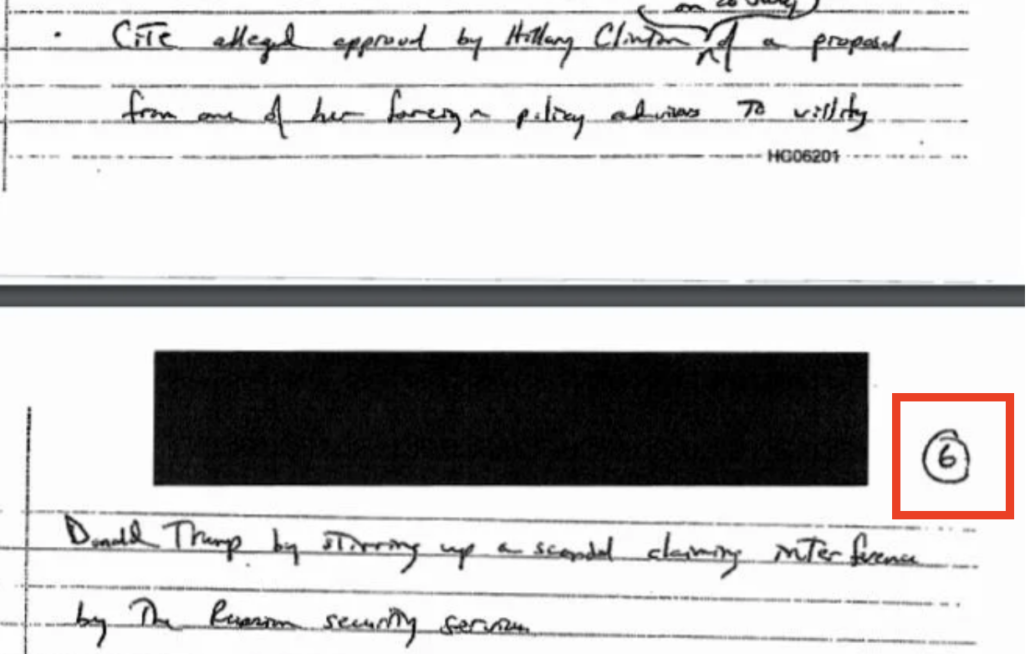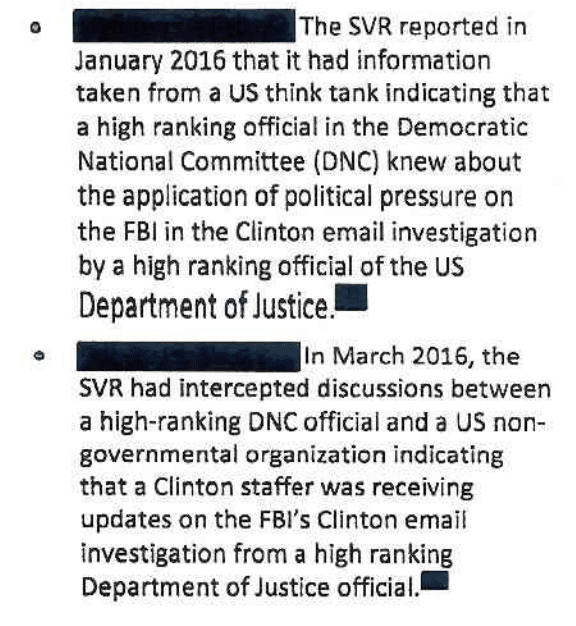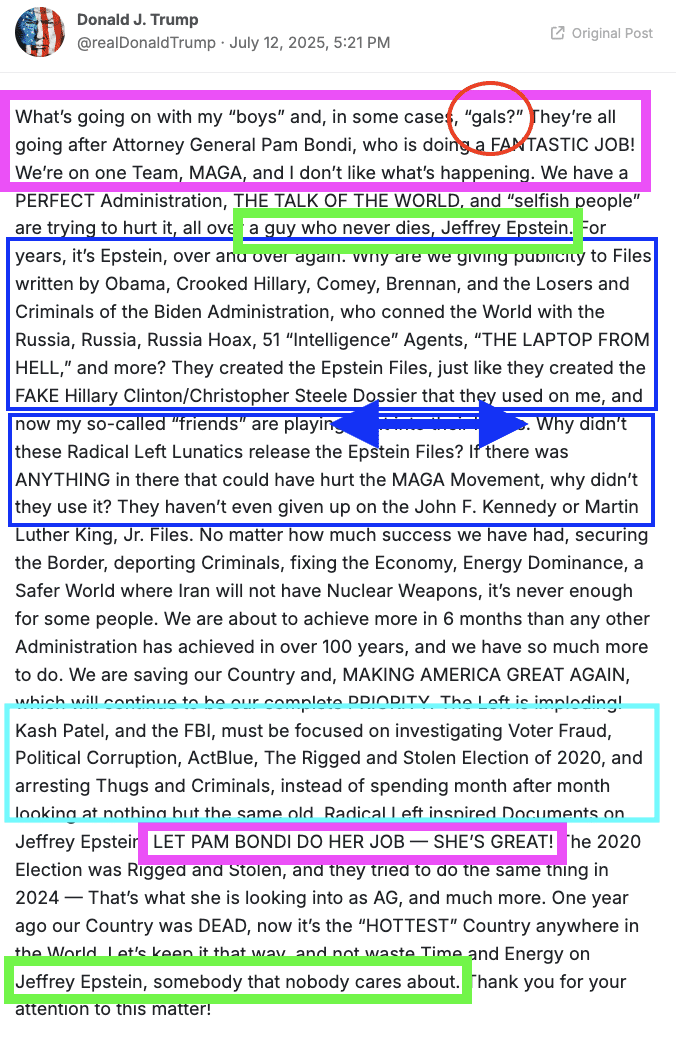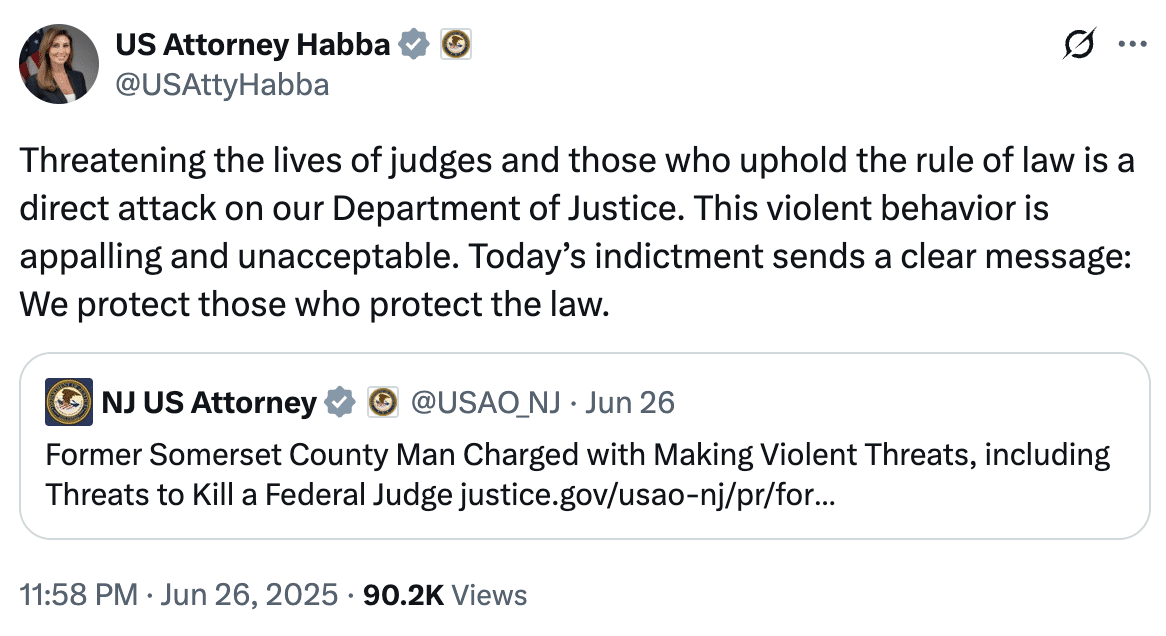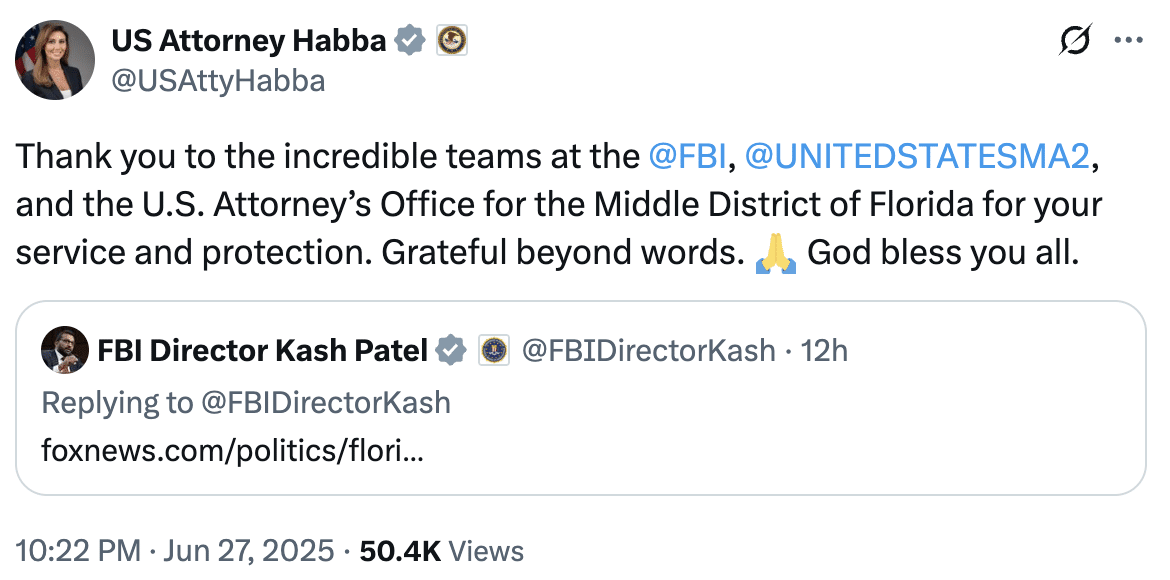In a Desperate Bid to Survive His Latest Fuck-Up, FBI Director Kash Patel Desperately Clings to Propaganda
The FBI Director just endorsed the ignorant ravings of a long-discredited propagandist, Sean Davis, attempting to debunk the NYT’s factual reporting that the letters on which the entire conspiracy the frothy right has been chasing for years “were probably manufactured.”
Kash needs Davis to be right, because if he’s not, it exposes Kash as someone too stupid to understand he has been chasing Russian disinformation for years. Kash needs Davis to be right, because Kash just declassified this annex thinking it would help his boss distract from the Epstein scandal that him himself stoked, when in fact it shows that Russian spies have been laughing their ass off at everyone involved for nine years (which I’ll come back to).
The truth is, Kash has been chasing documents as self-evidently problematic as the Steele dossier all that time.
He has proven an easy mark.
So while Sean Davis is never worth anyone’s time, I want to unpack the propaganda the FBI Director is clinging to, even as Russian spies laugh their ass off at him.
Start at the end. Davis claims “everyone on earth knows.”
6) Everyone on earth knows the Clinton campaign launched a scheme to falsely claim that Trump colluded with Russia. This new claim that somehow it was a fabrication that the Clinton campaign ran an op to falsely tie Trump to Russia is beyond insane. It’s sociopathic.
But poor Davis can’t even parrot Russian intelligence accurately. All the intelligence report in question claimed is that Clinton,
approved a plan … to smear Donald Trump by magnifying the scandal tied to the intrusion by the Russian special services in the pre-election process to benefit the Republican candidate.
As envisioned by Smith, raising the theme of “Putin’s support for Trump” to the level of the Olympics scandal would divert the constituents attention from the investigation of Clinton’s compromised electronic correspondence.
Even the Russian spies, in their effort to gin up polarization in the US, didn’t claim Hillary would need to fabricate anything. As I’ve shown, the claim she would fabricate anything was itself a fabrication by John Durham, largely sustained by ignoring all the things in plain view — like Trump’s request for Russia to hack Hillary, his ties to Russian oligarchs, and the use of his properties to launder money.
Anyway, once you’re arguing that “everyone knows” something, or that it is “sociopathic” to actually examine the evidence, you’ve confessed you’re just adhering to this as an object of faith.
Now go back to the start of Davis’ rant.
That’s not what it shows at all. The New York Times is straight up lying.
1) The Durham annex never states at all that the specific intelligence was “fabricated.” It says the opposite, that his office was never able to “determine definitively whether the purported Clinton campaign plan [intelligence]…was entirely genuine, partially true, a composite pulled from multiple sources, exaggerated in certain respects, or fabricated in its entirety.”
Davis creates a straw man, claiming that the NYT said the emails were fabricated. In fact the only people in the NYT story in question who used the word “fabricate” were the Trump flunkies who have chased this: John Ratcliffe, who acknowledged the possibility they might be in 2020, at a time when Kash worked for Ratcliffe.
Ahead of the 2020 election, Mr. Ratcliffe, as director of national intelligence in Mr. Trump’s first term, had declassified and released the crux of the July 27 email, even though he acknowledged doubts about its credibility. Officials did “not know the accuracy of this allegation or the extent to which the Russian intelligence analysis may reflect exaggeration or fabrication,” he said.
And Kash, five years later, as he rolled out an annex he probably doesn’t understand.
And Kash Patel, the F.B.I. director, who has a long history of pushing false claims about the Russia investigation, declared on social media that the annex revealed “evidence that the Clinton campaign plotted to frame President Trump and fabricate the Russia collusion hoax.”
But what Davis quotes there is from the end of this section, in which Durham effectively says, “after chasing this for four years, neither we nor the CIA were able to determine whether this was true, but since Brennan briefed the President on it, the FBI should have more seriously considered whether Hillary was trying to frame Trump.” More importantly, at that point Durham was talking about a plan in general, including Julianne Smith’s plan to get people to condemn Trump for attacking NATO. Davis puts the word “intelligence” in Durham’s mouth, claiming Durham is talking about something other than he was.
Importantly, this passage addresses not just the “Clinton plan” (including that letter about NATO) but whatever is under that redaction as well, and it comes at the tail end of analysis of earlier SVR documents that — among other things — also claim that Jim Comey was going to throw the election for Republicans.
Even this section relies heavily on the CIA, no doubt a 2017 review (which like the long redaction here) remains significantly redacted, long before Durham chased down authentic emails showing the actual content on which the SVR report was based was written by someone else, about something else.
As I’ll show, Durham lies throughout his annex about what the FBI actually knew. He has to. If his premise — that the FBI should have been more skeptical about the dossier and the Alfa Bank allegations — is false, then his entire four year witch hunt was futile.
But Davis ignores the bit of the report the NYT cites — specifically addressing the emails on which the SVR report was based — that says Durham’s best assessment is that the emails were “composites.”
“The office’s best assessment is that the July 25 and July 27 emails that purport to be from Benardo were ultimately a composite of several emails that were obtained through Russian intelligence hacking of the U.S.-based think tanks, including the Open Society Foundations, the Carnegie Endowment and others,” it says.
Durham may not have been able to definitely determine how the report was put together, which is different than the specific emails in question, which is what the NYT addresses. But his best judgment is that the emails were “composites.” His claim there was a Clinton plan relies on other things, like that NATO letter. Davis is not even addressing what the NYT is, the emails themselves.
Next, Davis confesses he can’t read page numbers.
2) At the time the intel which Ben Smith says was “fake” was received, John Brennan took it so seriously that he briefed Obama about it, took notes about it, and stashed the notes away in his safe.
What Davis is talking about are the notes from John Brennan showing that Brennan briefed President Obama on the SVR intelligence right away, which John Ratcliffe and Kash Patel released in an effort to help Trump win the 2020 election.
But Davis is once again conflating two things. Brennan took the SVR intelligence seriously, which is different than Brennan taking the allegations in this report seriously. This particular note spanned the fifth and sixth pages of his notes. Probably, the things Brennan took more seriously were on earlier pages of his notes.
In any case, this response was based off an intelligence report written no more than a day earlier. It was not the result of concerted analysis (and it’s not clear whether Brennan had seen the SVR email from the day earlier where Russian spies spoke about ginning up a scandal themselves, which itself was genuinely alarming but which Kash continues to ignore).
Next, Davis looks at what Comey said about the earlier reports, dating to January and March 2016, which alleged both that Loretta Lynch was trying to undermine the investigation but also that he himself was trying to extend it to help Trump win.
3) James Comey specifically went under oath and cited the Clinton plan intelligence as one of the major reasons he chose to unilaterally usurp the authority of Loretta Lynch and to declare that the U.S. government would not charge Hillary Clinton for her use of an illegal private email server.
4) Comey told Congress that he believed the Clinton plan intelligence was “genuine.” “So far as I knew at the time, and still think,” Comey testified on December 7, 2018, “the material itself was genuine[.]”
Once again, Davis is conflating different things. Worse still, he is truncating what Comey said about the earlier reports. He said they were genuine (that is, authentically from SVR), but that he couldn’t vouch for their accuracy.
Mr. Comey. I know generally, and I have to tread carefully here, because I think the underlying material is still classified. So there was material — this is what I’ve said publicly, and so I’ll say it again, there was material that was classified that if unclassified, released, would open the Attorney General up to the accusation — whether it was true or not — the accusation that she had not been acting fairly and impartially in overseeing the investigation.
So far as I knew at the time, and still think, the material itself was genuine, which is a separate question, though, from whether it was what it said was accurate.
Finally, Davis points to still more reactions to the earlier emails (and reactions to Lynch’s reaction to them).
5) FBI general counsel James Baker said he was “greatly concerned” about the intel and specifically Lynch’s reaction when confronted with it. Durham’s report said Baker “did not dismiss the credibility” of the intel reports. Andrew McCabe likewise said he was struck by Lynch’s “odd” reaction to the allegations.
Understand, Davis’ proof that the NYT is wrong consists of repeatedly conflating one thing (a Clinton plan, including to send a letter about NATO) or another (those January and March 2016 reports) for what NYT wrote about, the emails themselves, even while twice misquoting people.
- Bullet 1: Davis misquotes both the NYT and Durham and conflates a Clinton plan for emails from which SVR invented a claim of one
- Bullet 2: Davis conflates the entirety of the SVR intelligence for this one report
- Bullet 3 and 4: Davis conflates January and March 2016 reports for a July 2016 one, and truncates a Jim Comey quote
- Bullet 5: Davis again conflates those earlier reports for the later one
- Bullet 6: Davis clings to faith rather than facts
Crazier still, Davis invests everything in both those January and March 2016 reports to be true.
If they are, it means Jim Comey deliberately threw the 2016 election by extending the Clinton email investigation, and Donald Trump didn’t get elected fair and square.






